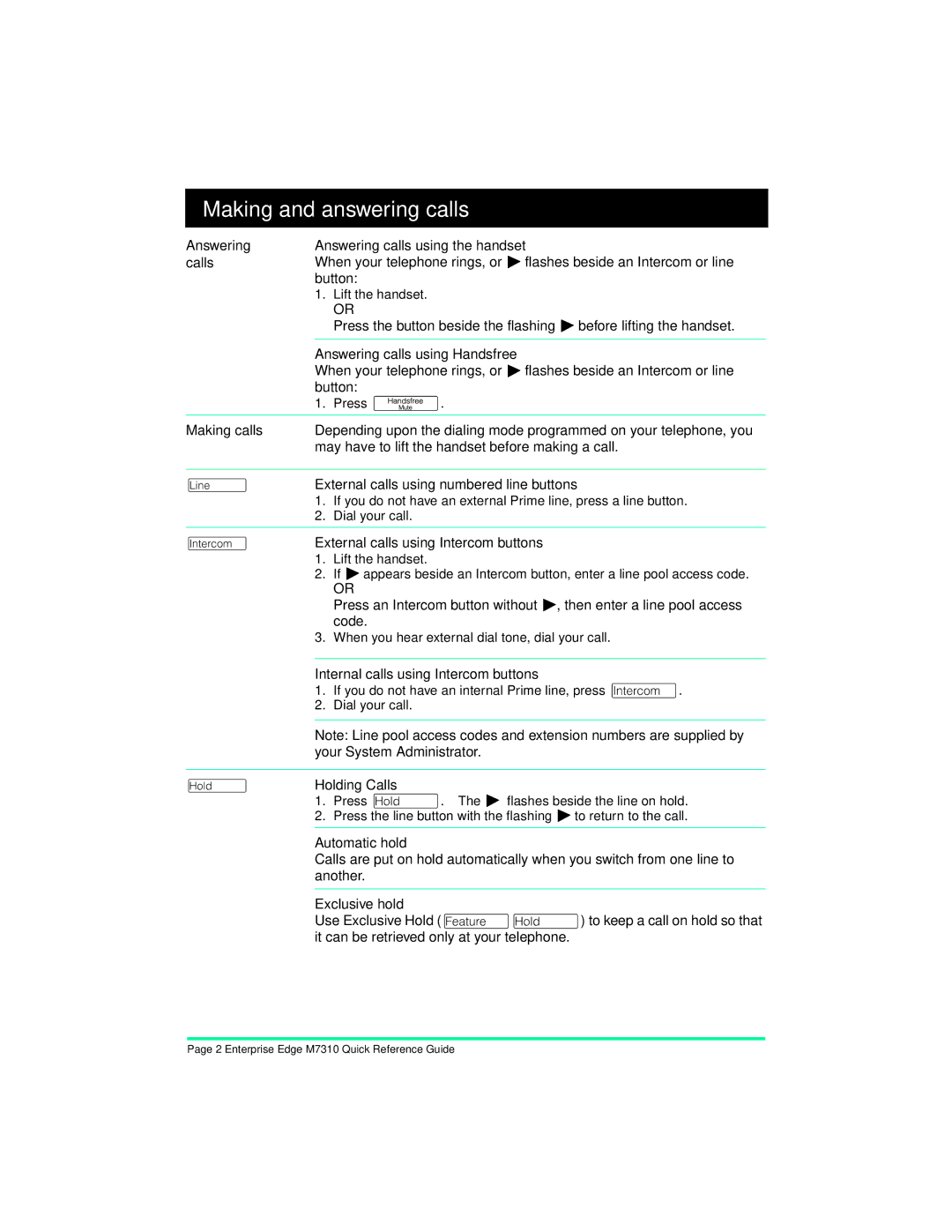m7310 specifications
Nortel Networks was a significant player in the telecommunications industry, and two of its notable products are the T7316 and M7310 series of telephones. Designed primarily for business environments, these models showcased advanced features and technologies that catered to the needs of modern communication.The Nortel T7316 is a versatile phone that combines functionality with a user-friendly interface. One of its key features is the dual-line capability, which allows users to manage multiple calls efficiently. This is particularly beneficial for busy professionals who often juggle several conversations simultaneously. The T7316 also includes a large LCD screen that displays caller IDs and enables users to navigate through menus effortlessly.
Moreover, the T7316 comes equipped with 24 programmable keys, offering customization options for quick access to frequently used features or contacts. This level of personalization improves productivity by allowing users to streamline their communication processes. It also includes support for voicemail, enabling users to manage their messages conveniently without needing to rely on a computer.
Similarly, the M7310, while sharing many features with the T7316, differs in its design and some of its capabilities. It is often considered a more straightforward model, providing essential functionalities that many users find appealing. The M7310 sports a single-line display but retains the dual-line capability, allowing users to engage with multiple callers.
Both models support Nortel's digital technology, which enhances voice clarity and reliability. This technology minimizes interruptions and enhances call quality, making them ideal for business environments where clear communication is crucial. They are compatible with the Nortel Meridian digital telephone systems, integrating seamlessly into existing setups.
Further emphasizing their practicality, both telephones support various accessories, such as headsets, enhancing user comfort during prolonged use. With a reliable build quality and robust design, the T7316 and M7310 series are built to withstand the rigors of daily business use.
In conclusion, Nortel Networks' T7316 and M7310 telephones represent two diligent solutions for business communication. With their blend of advanced features, user-friendly designs, and integration with digital technology, they remain valuable tools in ensuring efficient and effective communication in the workplace. Whether for multitasking or straightforward calling needs, these models have left a lasting impact in the telecommunications sector.

